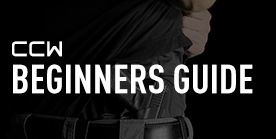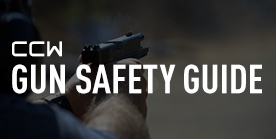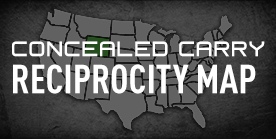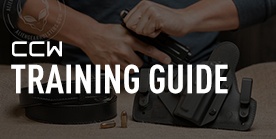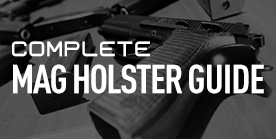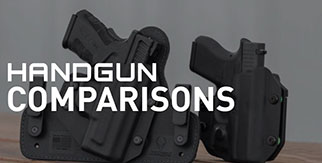
How To Avoid A Negligent Discharge

A negligent discharge is definable as the discharge of a firearm caused by inattentiveness or carelessness. It's what happens if your gun goes off when you didn't intend it to. Some people argue that ANY discharge that isn't intentional is negligent, and there's something to be said for that.
You are responsible for what happens with your gun, whether you intended to do it or not. As a result, it is incumbent upon you to take the utmost of care while handling, carrying or shooting firearms to ensure that you and those around you are safe.
Make no mistake: every time a negligent discharge gets into the news, it makes the rest of us look bad. If we, the gun owners of America, want to keep our rights safe, then we need to make sure that we are all doing our part to avoid negligent discharges and to be models of care and safety. Let's talk about how you can avoid ever having a negligent discharge.
NEVER Pocket Carry Without A Pocket Holster

The most common cause of negligent discharge is pocket carry without a pocket holster. Google "negligent discharge" and you'll find example after example where the gunshot was caused by someone carrying a gun in their pocket with nothing to protect the trigger guard.
What usually happens is some yokel puts a loaded pistol in their pocket and heads out the door. Then, something inside the pocket - some object, or the fabric of the pocket itself - snags the trigger and pulls it. Or, the person carrying adjusts the pistol to sit down or something and the same thing happens.
People have been injured or killed because of this, and it's 100 percent preventable.
Off Body Carry...When Done Wrong

Another cause is off-body carry, whether in a backpack or a purse or a messenger bag.
This isn't to say that carrying in a purse, or a briefcase or messenger bag or backpack is totally unsafe as a general rule. Instead, it's more that it has to be done right or else you're taking a serious chance at an ND.
For starters, the pistol MUST be carried in a holster. At minimum, get something like a universal holster that at least keeps the trigger guard covered. Better still, get a holster that can be attached to a hook and loop pad that could be installed in a purse, backpack or what have you.
Additionally, the pistol needs to be kept in a dedicated compartment, with nothing else in it.
If you're going to carry in this fashion, you must also take great pains not to drop the bag. Ever.
How do negligent discharges occur with this carry method? First, someone reaches into the bag to grab something - say a wallet or something else - and they snag the trigger. BOOM. Or, they drop the bag and the gun goes off. While modern guns are generally drop-safe, it's best not to take chances if you don't have to.
4 Laws Of Gun Safety

Remember the 4 laws of gun safety.
'Nuff said.
Careful Use Of Your Concealed Carry Holster

Another potential cause of accidental discharge is improper use of a concealed carry holster.
Where accidental discharge can occur is upon reholstering. Make sure that your holster is clear of any clothing or other objects before fully inserting the pistol. Start with light pressure as you guide the pistol into the mouth of the holster. If you feel any resistance whatsoever, stop immediately.
This is especially important in this age of polymer striker pistols. For the thousandth time, Glocks and other pistols of that type are perfectly safe; it's not the gun's fault. However, the light trigger system DOES require that you pay attention or possibly suffer consequences.
Buy A Proper Holster

There are many holsters on the market. Many are excellent. Some are not.
A holster, after all, is a tool and you need to select a tool that is actually going to do the job and there is a reason why you don't do car repairs with a crescent wrench unless you don't have a choice.
Any holster that doesn't fully cover the trigger guard is not appropriate. Any holster that is soft enough for you to feel the trigger through the holster? It's okay if you're covering your gun to store it in the safe. Otherwise, it's inappropriate.
In this age of online shopping, you don't really have to invest much to get a quality carry holster. Additionally, you're going to get some holster wear; if you're so concerned with your gun's finish, you need to leave it in the safe and get one that you don't mind getting a bit smudged. Just like having to do periodic handgun maintenance, holster wear is a fact of life.
Any holster that has no trigger guard is probably inappropriate. A big single-action revolver in a Threepersons rig is not really in keeping with best practices, but then it's not like you'd conceal and carry a Ruger Blackhawk...though it's possible that some folks out there do.
Pay Attention

One of the best tips for safe concealed carry is to just pay attention. Guns aren't inherently dangerous - they're inert objects - but just like an automobile, they can BECOME dangerous if handled or carried inappropriately or carelessly.
If you read up on enough accidental discharge reports where people are hurt or worse, one of the things that becomes blatantly obvious is that they are usually avoided and rather easily. If the people involved had just exercised a little bit of caution, maybe a little bit of brains, then it wouldn't happen.
Look, people die because of negligent discharges. It does not take much to prevent them, either. If you use your head, and invest a little bit of money in some decent carry gear, and treat your and other people's firearms with the respect they deserve, you'll go a long way in preventing a negligent discharge from happening.




